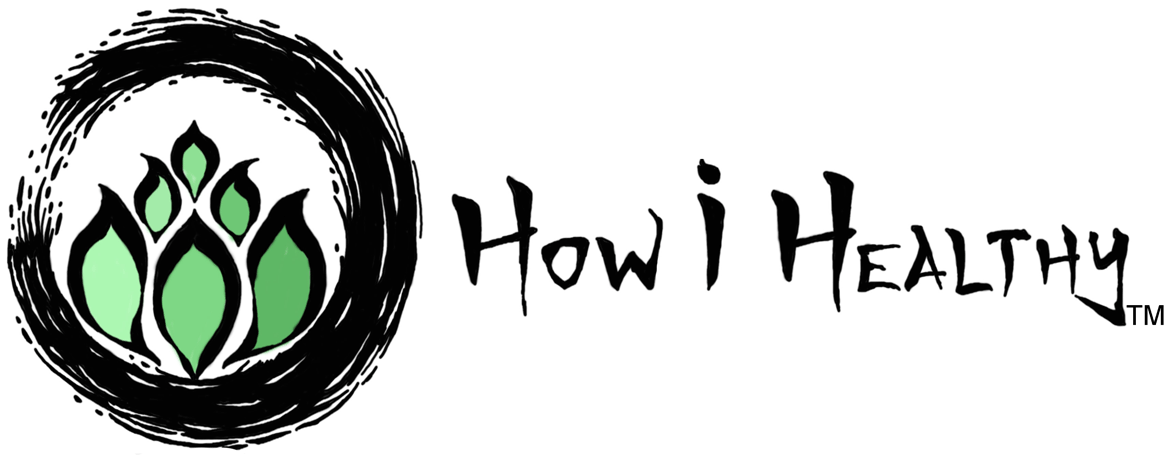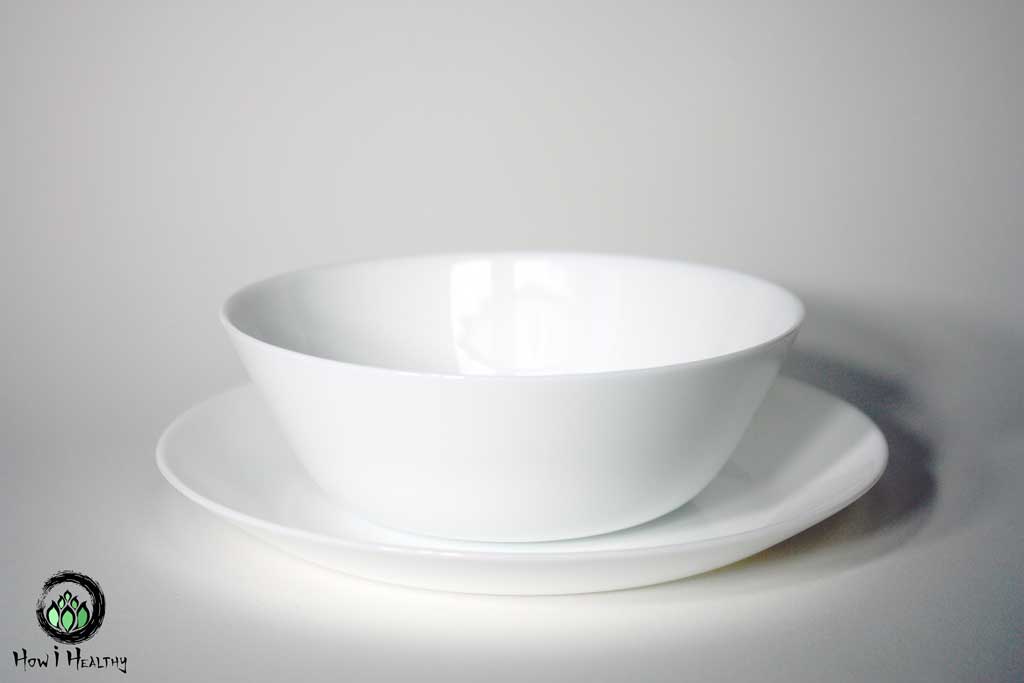In This Article, We'll Cover:
- The Dangers of Lead Exposure
- The History of Lead Poisoning
- Where Lead Lurks Today
- How to Avoid Lead
- How i Healthy’s Favorite Lead-Free Products & Why
When we think of lead poisoning and how to avoid lead, most folk imagine old homes with lead-based paint.
Perhaps rightfully so, lead paint is still the number one cause of lead poisoning. (1)
But there’s so many more places lead can hide!
When I found out that I had high concentrations of lead in my body, had a few questions:
- Where did the lead exposure come from?
- How to avoid lead moving forward?
Turns out, lead lurks in many places, and has for centuries.
And lead poisoning has impacted history for just as long.
We’ll cover hos to avoid lead and more.
But first, let’s back up and cover some basics.
Problems with Lead
Lead exposure or poisoning is linked to a host of things:
- Abdominal pain, loss of appetite
- Altered mental state, personality changes, delirium
- Anemia
- Behavioral and intellectual disorders
- Decreased life span
- Dementia
- Elevated histamine release. This causes things like: sinus issues, insomnia, nonrestorative sleep, urticaria (hives), flushing, migraines, blood pressure issues, and digestive issues.
- Encephalopathy (brain swelling), headaches
- High blood pressure, heart rate variability
- Infertility and low sperm count
- Inflammation throughout the body and impact C-reactive proteins
- Impact the immune system
- Impaired methylation
- Learning disabilities
- Lower IQ and developmental delays in children
- Mitochondrial dysfunction
- Pica, or a persistent and compulsive craving to eat things that are not food, such as hair, rocks, caulk, and paint.
- Premature birth, low birth weight
- Reduced attention span, ADD, ADHD
- Renal impairment or failure
- Reproductive development delays
- Weakness, muscle pain, fatigue, apathy, depression
(12, 13, 15, 52, 53, 54, 66, 89)
That’s a long list. Lead affects every system in the body. (15)
With this list in mind, let’s see how lead exposure & poisoning impacted history.
Lead: A Brief History
Lead is a metal easily extracted from the earth. Its ductility, or ability to be molded, made for a popular material of the ancient world. (3)
Lead in Ancient Greece and Rome
The prevalence & favorite use of lead is evident in the word itself: plumbing.
Etymology
Latin: plumbum (lead)
“Plumbing” comes from this root. Ancient Roman plumbing systems often used lead pipes.
This is also why “Pb” represents “lead” on the Periodic Table of Elements. (2)
The ancient Roman and Greek Empires have an interesting relationship with lead.
According to mythology, Saturn, not just a planet, but also a mythical titan who devoured his own young, represented lead. The word “saturnine” describes a taciturn temperament associated with lead poisoning. (2)
Another example, Saturnine Gout. It’s a form of gout caused by renal failure due to lead toxicity. (3)
Dangers of lead were evident, even in ancient Roman times.
Engineer, Marcus Vitruvius Pollio, linked lead mining and manufacturing to adverse health effects. He even advocated for the use of clay piping instead of lead. (7)
Some historians theorize that lead poising contributed to the weakening, decline, and eventual fall of the Roman Empire. At the time, Roman elites drank leaded wine, prized for its sweetness. Consumption could have caused health issues like mental instability and infertility. (3, 15)
Lead in the Middle Ages, Renaissance, and Industrial Revolution
In Europe during the Middle Ages, avoiding lead as a wealthy person was nearly impossible. Glazed pottery, a mark of status at dinner tables, contained lead oxide. Acidic foods reacted with the lead oxide, especially pots that contained fermenting foods, and contaminated those foods with lead. (99)
Coins, which the wealthy tended to handle more, often contained a percentage of lead too. (99)
It wasn’t just the wealthy who had more exposure to lead. City dwellers, regardless of wealth, collected water from roof runoff, roofs that often were lead-tiled. Rainwater collected from leaded roofs may have also been a source of lead in some cities across Europe. (99)
In the Middle Ages, the rural and non-wealthy people had lower levels of lead in their body than wealthy and urban dwellers, according to a study that compared 207 skeletons from six cemeteries in Germany and Denmark. (99)
In Renaissance Europe, lead was the preferred poison for enemies. The “poudre de la succession”, or “succession powder”, used on enemies contained lead. (2)
And historians hypothesize that leaded paints, used by Renaissance artists and beyond, caused health issues related to chronic lead poisoning. Artists like Rembrandt, Van Gogh, Michelangelo, and more have documented ailments that align with symptoms of lead toxicity. Van Gogh was known to be practically found of a sweet-tasting paint pigment, that he ingested by sucking his brush. That pigment? Yep, contained lead. (2, 4, 100)
The “painter & health problem” connection is documented. “Painters colic”, as describe in medical literature dating back centuries, was an affliction of “great pains, epileptic characteristics, blindness, deafness, and coma”. (97, 98)
Industry of the 18th century used lead extensively in manufacturing systems, ceramic glazes, glass, and paints. (3)
Lead poisoning from production fumes and leaded paint poisoned working class populations. Collective health problems spurred social reforms and better labor protection laws. (3, 5, 6)
Leaded Gasoline, Not Ancient History
Just a few decades ago, leaded gasoline, or tetraethyl lead (TEL) fueled automobiles. Because of its ability in induce hallucinations, TEL gasoline was coined “Loony Gas”. (8, 9)
In 1925, mounting evidence against the safety of TEL gasoline spurred a debate. One that would shape America’s history for decades.
General Motors, Ethyl Corporation, and Standard Oil debated the top scientific authority on lead poising, Dr. Alice Hamilton. The corporations suppressed Dr. Hamilton’s scientific knowledge, recommendations, and warnings. (8, 9)
What happens next is no surprise. The dangers of lead poisoning and pollution were shoved aside to make room for industrial expansion, profit, and progress.
The use of TEL leaded gasoline increased. The repercussions would unfold over decades. (8, 9)
By the 1970’s evidence of the dangers of TEL gasoline and pollution in general mounted. The United States passed the Clean Air Act, which phased out TEL gasoline by 2000. (3)
Unfortunately, this only caused TEL sales to move to overseas. Not until 2011 was TEL phased out of most world markets. (3)
But lead exposure via leaded gasoline, as well as aviation fuel, is still prevalent, according to the World Health Organization and EPA. (12, 64)
Where Lead Lurks Today
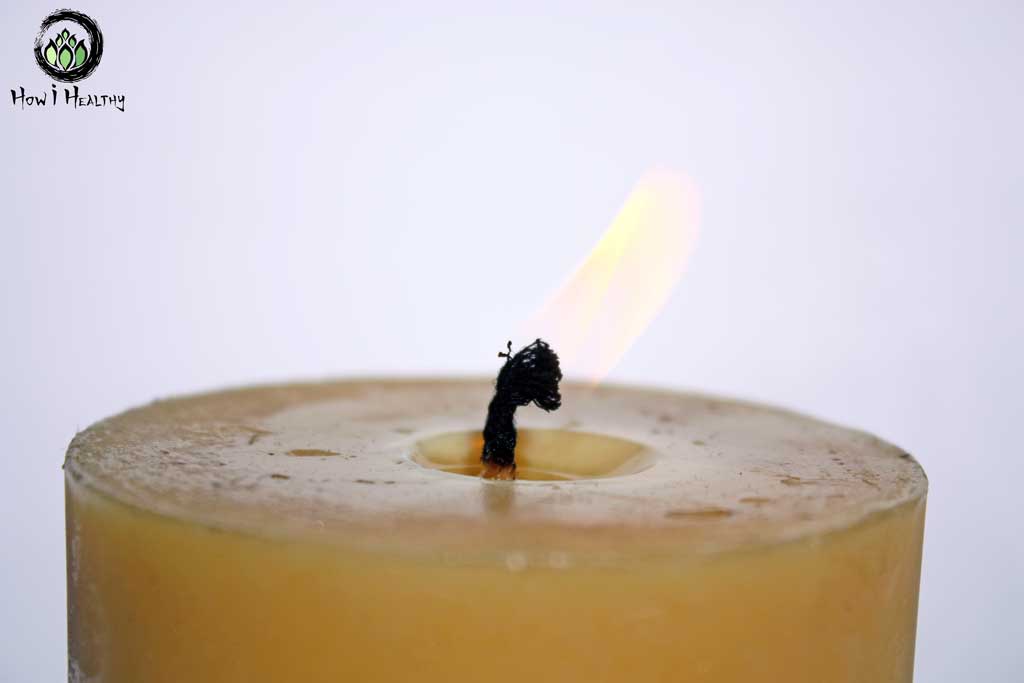
Although leaded gasoline use has decreased, lead exposure is still a health concern. (12, 15, 64)
Where does lead still lurk?
Battery Manufacturing and Recycling
Lead-acid batteries (LAB), like those used as car batteries, are the highest recycled product in the U.S. at 99%. (38)
But LAB recycling is also the most polluting industrial process in the world. (39)
It’s ironic.
The most recycled product also makes the most pollution during its recycling process. (39)
Baby Food, Formula, Teething Biscuits, Juice, etc.
In 2019 by HealthyBabyFood.org tested food for heavy metals. They tested:
- 168 foods from 13 different food types
- Including: Juice, rice cereal, infant formula, teething biscuits, and jarred baby food
- 61 different brands (both organic and non-organic)
(26)
The results?
Only 9 of the 168 samples detected zero heavy metal contamination. Not only did these foods contain lead, but they also contained arsenic, cadmium, and mercury. (26)
In a 2022 follow up study, researchers found no significant difference in store-bought baby food or homemade baby purees. With carrots and sweet potatoes being the most contaminated. (93)
They also concluded that rice, rice-based puffs, cereals, raisins, oats, and granola bars were the most heavily contaminated foods for lead and arsenic. (93)
Bathtubs
Enamel bathtubs can have lead contaminated coatings. (50, 51)
A man found dead of lead poisoning, fermented wine in his enameled bathtub. (50)
Ceramics, Earthenware, and Pottery
Lead can contaminate ceramics, pottery, and clay/earthenware. Often contamination is in the paints or glazes. The lead can leech into food. (19, 20, 64)
Today, California’s Prop 65 and the FDA regulate lead contamination in dishware. But antique china, handmade pottery, or tableware purchased abroad may contain lead. Even lead-free pottery fired in an kiln contaminated with lead can be contaminated. (19, 20)
Plain white dishes without any decorative paints or gold/silver rims generally do not contain lead, according to The California Department of Health. But testing your dishes for lead contamination is the only way to know for sure. (19)
Children’s Toys
Yep.
In one study, 12% of toys tested had lead concentrations that exceeded China’s regulations. 36% exceeded the United States and EU standards. (17, 18)
In 2007, 4 million pieces of “play jewelry” were recalled for lead contaminations of up to 50%. (64)
Cosmetics
Cosmetics, including lipstick and eye shadow, have show toxic levels of lead after just a few applications. And that lead is most likely being ingested or entering the mucus membranes of the eye. (101, 102, 103, 104)
Counterfeit Goods
Knock-offs and counterfeit goods are alive and well. (70, 71, 72, 73, 74, 75)
Counterfeited goods exceeded $509 billion in value in 2016, according to the Organization for Economic Cooperation and Development (OECD). (72, 73)
Counterfeiters set up shop on third-party market places and other websites like: Amazon.com, Walmart.com, SearsMarketplace.com, Newegg.com, and Ebay.com. (70)
Counterfeit goods in a report contained human and rat feces, mercury, aluminum, and yep, you guessed it, lead. (70)
Check out my Guide to Avoiding Counterfeits to better spot the fakes.
Drinking Water and Leaded Pipes
Lead in drinking water spans centuries.
Leaded pipes & solder, improper disposal of leaded waste, and industrial pollution can contaminate drinking sources. Although regulations treat water, it is not a perfect system. Plus, leaded pipes still exist in some American plumbing systems. (40, 64)
One example (out of many): the Flint, Michigan Water Crisis. (41, 42, 86)
I could write a completely separate article on this issue alone. But I will try to give it some justice with a few paragraphs.
Flint, Michigan’s population is predominantly Black and Latinx. (86)
In 2013, the Michigan Governor rerouted Flint’s water source to the Flint River in an attempt to cut costs. Subjected to years of improper waste disposal, pollution, and raw sewage from nearby industry and landfills, Flint River was highly corrosive. (41, 42, 86)
Inadequately treated, the corrosive water was then piped through antiquated lead pipes, also called Lead Service Lines (LSL). The lead pipes corroded. Lead then leached into the corrosive water. (41, 42, 86)
Flint residents reported foul smelling, off-tasting, and colored water that caused rashes, itchiness, and hair loss. (41, 42)
That was only the beginning.
Officials ignored mounting reports and concerns from Flint residents. In 2014, researchers at Virginia Tech discovered that water lead levels had spiked 17%. (41, 42)
Cases of Legionnaires disease (a severe type of pneumonia), death, and developmental delays affected nearly 9,000 of Flint’s children. Blood tests reveled that lead levels had doubled and nearly tripled in Flint’s children. (41, 42)
It took two years for advisory warnings and safety precautions to be written in Spanish. All public messaging, warnings, and safety precautions until then were in English. For many Spanish-speaking residents, this was the first they learned of the 2-year-old crisis. (86)
Eventually, governmental bodies initiated the FAST Start Program. This provided safe water and funds to replace Flint’s leaded pipes. As of 2022, the city has moved into the final stage of pipe replacement (41, 42)
The governmental actions were highly criticized as late, unjust, insufficient, and racist. (40, 41, 42, 86)
And, the people of Flint are still dealing with the impacts of lead-poisoned water. 80% of children in a sample required help for an language, learning, or intellectual disorder, whereas before the water crisis only 15% of children required special education services. (96)
And, a 2022 study concluded that Flint’s school district is disproportionately filled with students with special needs compared to other school districts. (94)
And due to discriminatory housing policies, leaded pipes are more concentrated in Black and Latinx communities. Black children are 4x more likely to have elevated blood lead levels that children of other races. And being Black in America is a bigger risk factor for lead poisoning than poverty or poor housing. (95)
Dust and Dirt
Lead can contaminate soil in our neighborhoods.
Runoff from factories, recycling plants, automotive/aviation emissions, and even closed down smelter sites can contaminate dirt. This dirt can come into our homes from our shoes, or as dust blowing in the air. (64)
In 2004, soil accounted for 24% of lead exposure incidents in Arizona. Dust was 15%. (64)
Those dust bunnies aren’t so harmless now!
Glassware, Drinking Glasses, Crystal Glass
Glass, in general, is less likely to have lead, but not always. (27)
Colored glass or glass with enamel, paint, or metallic rims can contain lead. (28, 64)
Crystal, such as wine or alcohol decanters, are more likely contains lead. Contamination can happen quickly. Researchers found lead from crystal glass contaminate white wine within minutes. (63)
That’s why I prefer borosilicate glass for anything glass. From my French Press to Sex Toys.
Hair Dye
Hair dyes can contain lead acetate. The Food and Drug Administration (FDA) currently considers this a safe additive. (23)
Despite being “safe”, chemical hair dye, might increase the risk of developing cancer and brain tumors, neuroblastoma cancer in children whose mother used hair dye while pregnant. But for every study showing a hair dye-cancer relationship there is another study suggesting no relationship or lack of definitive findings to draw any conclusions. (105, 106, 107, 108, 109, 110)
The American Cancer Society agrees there is not enough conclusive data for either statement. (106)
In 2018, the FDA ruled that hair dye must comply with 21 CFR 73.2396. This means that hair dye containing lead acetate must disclose so packaging. (23)
That doesn’t change much. Hair dye can still contain lead acetate.
Even “natural” hair dyes can contain lead acetate (and other scary things!) That’s why I prefer plant-based henna hair dye. But even some henna can contain lead, so checkout my Henna Hair Dye DIY for my favorite third-party tested lead-free henna brand.
Hobby, Occupational, and Sports
Materials and tools can contain lead.
Fishing sinkers, lead shot ammunition, pottery glazes, glass manufacturing products, soldering, welding, plumbing pipes, and auto mechanic parts can contain lead. (15, 43
Keys
Car and house keys can contain up to 2.5% lead. (48)
Adding lead to brass makes keys easier to cut. Locksmiths/key makers’ blood samples have shown to contain higher concentrations of lead. (48, 49)
Leaded Candle Wicks
Not only do many candles contain VOCs like toluene and benzene, but wicks from candles can contain lead. Up to 74%. (30, 32)
When leaded wicks burn the risk of contamination via inhalation increases.
A single burn from a leaded candlewick can exceed the EPA’s “ambient air lead concentration limit”. Continued burns can increase lead concentration levels to exceed OSHA permissible exposure limits. (31, 32)
Mardi Gras Beads
Lead in cheap jewelry, like Mardi Gras beads, is concerning.
David Redmon, author of Beads, Bodies and Trash exposes the environmental, socioeconomic, social, economic, and health consequences of Mardi Gras beads.
The life cycle of Mardi Gras beads is a long one, full of repercussions and complexities.
Most Mardi Gras beads are plastic, mainly polystyrene and polyethylene. Those come from petroleum oil fields in the Middle East. Once manufactured, the beads ship to China. There, cheap and child labor strings them then sends them off to America. (36)
Roughly, 25 million pounds of Mardi Gras beads ship out each year. (36)
Tested Mardi Gras contained dangerous levels of bromine, arsenic, phthalate plasticizers, halogens, cadmium, chromium, mercury, chlorine, flame retardants, and yep, you guessed it, lead. (36)
Those contaminates don’t stay on the beads.
The soil along the Mardi Gras Parade route in New Orleans has higher levels of lead contamination than other parts of the city. (36)
Contamination doesn’t only affect New Orleans and its people. The people and children who make the beads risk exposure as well. (36)
It seems a harmless thing, Mardi Gras beads. But this is an excellent example of harmful consumerism. Consumerism that hurts the environment and people. On a global scale. For a products’ entire life cycle. (36)
Polyvinyl Chloride (PVC)
Lead salts stabilized polymers used in PVC. With extended use, or exposure to sunlight, PVC can degrade, releasing lead. (64)
An example? Mini blinds. Ironically, mini blinds typically have prolonged exposure to the sun. (64)
Another example: Artificial Christmas trees. PVC Christmas trees degrade after about 9 years. (64)
I know it sounds ridiculous, but soft vinyl lunch boxes can contain lead. Food that rubs on vinyl lunchboxes could be rubbing that lead right off. (64)
Sex Toys
12 of 16 plastic dildos tested by the Danish Technological Institute, contained lead. (65)
Factor in the absorbent and permeable tissues of the mouth, anus, and sexual organs. Lead and easily absorbed? That’s not a good combo. (66, 67, 69, 69)
It doesn’t stop with lead. Sex toys can contain lots of other harmful stuff. That’s why I made a Sex Toy Materials Guide and a Guide to Sex Toy Greenwashing. Both of these guides layout ways to avoid toxic (for body & planet) sex toys.
Salt
Yup. Table salt. Cooking salt. Sea salt. Himalayan salt. (112, 113, 114)
Salt can be contaminated with lead.
In some cases, a single serving of salt can surpass the acceptable threshold for lead. (112)
Lead & Environmental Racism
Lead exposure is not equal for all. (87, 89)
Remember Flint, Michigan?
Leaded pipes disproportionately harm Black and Latinx communities and their children. For years, lead advisory warnings were only in English, leaving Spanish-speaking communities in the dark. (86)
Flint, Michigan is a tragic example of structural and environmental racism. And, it’s not an isolated case.
And due to discriminatory housing policies, leaded pipes are more concentrated in Black and Latinx communities. Black children are 4x more likely to have elevated blood lead levels that children of other races. And being Black in America is a bigger risk factor for lead poisoning than poverty or poor housing. (95)
It’s more than leaded pipes though. Deteriorating lead-based paint and lead contaminated soil is still found throughout America. And predominantly in Black, Indigenous, and Latinx communities. This spatial injustice is further exploited by structural and systematic racism. This perpetuates procedural injustices that prevent policy change. (88, 89, 90, 91)
Lead poisoning is not just a public health issue; it is an environmental justice issue. (87, 88, 89)
My Lead Exposure
As I dove deeper into research for this article, I realized that I was very privileged.
I’m white, I don’t have lead pipes, and I don’t work in an environment with occupational exposure. I don’t chemically dye my hair. My house doesn’t have lead paint. I had a robust three-stage filter for my drinking water.
My privilege allowed me to avoid many common sources of lead without even realizing it.
But here’s the thing. A few years back, I had several symptoms associated with lead toxicity:
- Body pain, muscle pain
- Elevated resting heart rate
- Extreme fatigue
- Non-restorative sleep even after 11+hours of sleep
- Pungent body odor, even within minutes after showering
- Urticaria (hives)
I was exhausted and sleeping more didn’t help. I hurt. And I smelled really bad.
After months, things worsened. So, I meet with my doctor.
Turns out, I had elevated levels of lead.
With my doctor’s help, I purged my house of potential sources of lead. Within two months, my body odor vanished. By three, I had more energy. By six months, I could wake up at 5:30am every morning and work out.
I went from struggling to get out of bed and missing work to having more energy than my partner. I once feared hugging people and now can wear a shirt twice before washing it.
The transformation was incredible, and I still feel amazing and stink free!
But where did the lead exposure come from? I suspect my earthenware ceramic coffee mug.
Gifted to me a year before my symptoms, the mug became a favorite for holding my coffee, often for days at a time. I kept leftovers in the fridge to reheat. I’m very classy.
While I did swap out the mug, I wasn’t taking any chances. I wanted a lead-free home.
How to Avoid Lead: House Detox
Here’s how I went lead-free at home:
Bakeware & Coffee Mugs: Anchor Hocking®

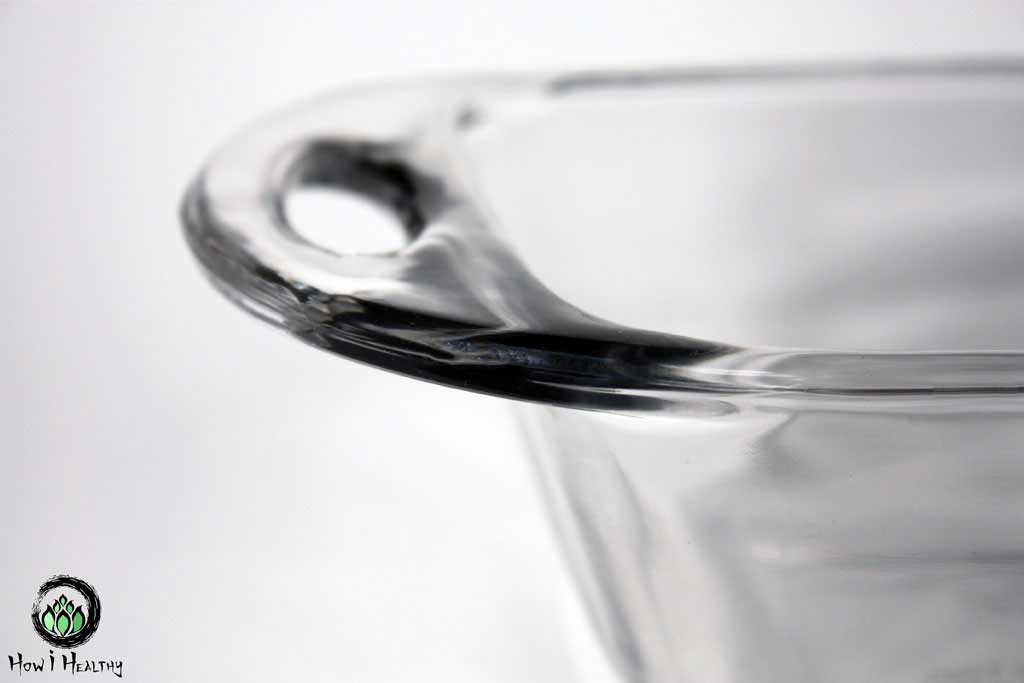
I ditched the ceramics and opted for these USA-made Anchor Hocking® Glass Mugs.
I love the curvy form and substantial feeling of these mugs. And I love the price tag!
These are machine washable and can handle hot French-pressed coffee without cracking.
The bakeware is glass, cost-effective, and made in the USA with lead-free glass.
Candles: Mt. Rose Herbs® Beeswax
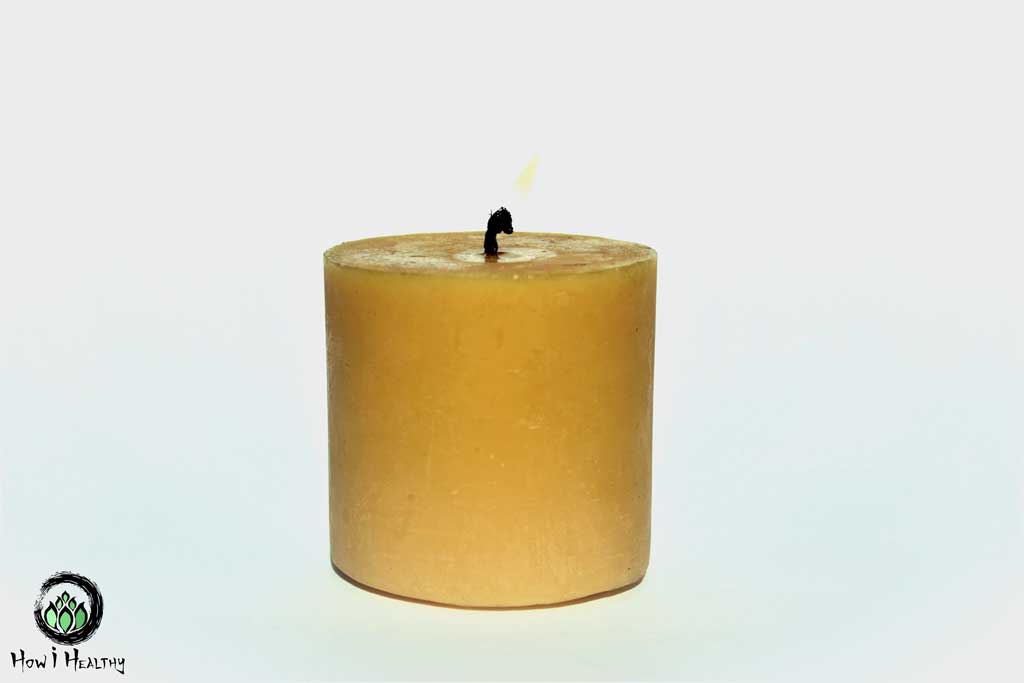
Mt. Rose Herbs® Beeswax Candles with 100% cotton wicks are lead free and made in Oregon, USA.
Prefer to DIY? This USA Raw Beeswax is perfect for all your lead-free candle-making adventures. I’ve also used it to grease wooden drawers on my dresser!
These candles are not only awesome, but they also come from an awesome company.
Just see my Mt. Rose Herbs® Review.
Cast Iron Cookware: Lodge®

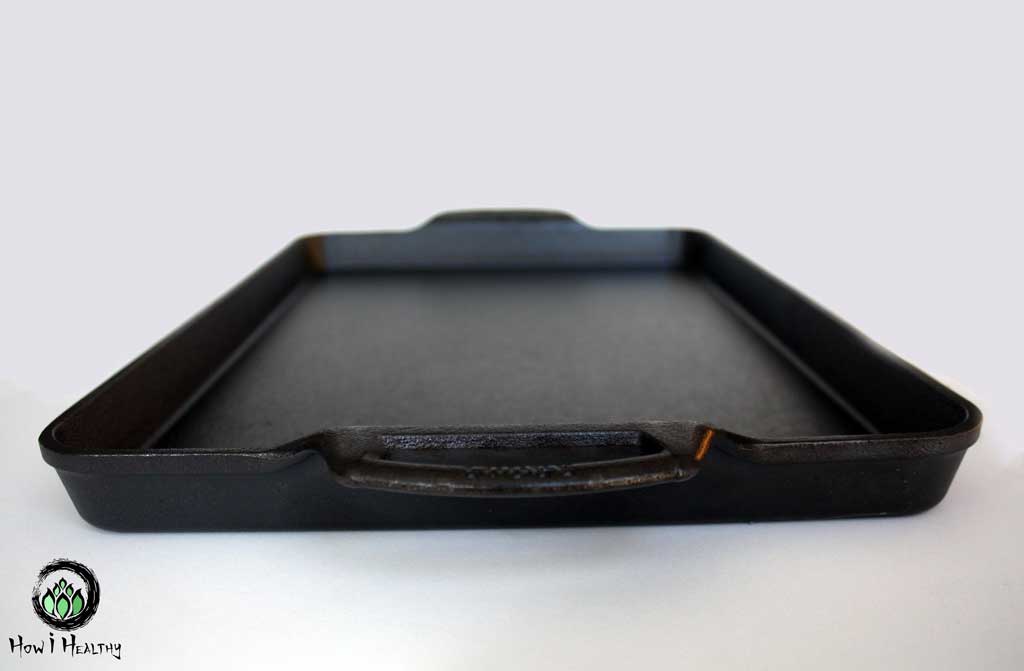

I like Lodge®.
Their stuff is made in the USA and cost-effective.
No frills and nothing fancy. Just good cast iron products.
*Note: Some of Lodge® is not made in USA, be sure to check before you buy.
Lodge® also ships in plastic-free, recycled, and biodegradable packaging.
Lodge® is a member of the Tennessee Green Star Partnership, a program facilitated by the Tennessee Department of Environment and Conservation. (92)
And Lodge® is a Zero Hazardous Waste Foundry. (92)
Looking for more cookware options? Yay! It’s a great opportunity to support a local/ home country business near you!
A quick online search of you preferred cookware material (i.e. cast iron, stainless steel, glass) and your home country (i.e. USA, Canada, UK) brings up many options. I found lots of made-in-Canada/Germany/UK cookware companies.
Just be sure to verify the individual piece you want is still made in the country you want.
Diner-Style Cook Tops: SteelMade USA
This is ingenious. SteelMade USA flat tops. Turn any kitchen stove into diner-style griddle!
The stainless steel cook top fits over an existing gas or glass range stove. It’s like an electric griddle, only bigger, no electricity required, and more awesome!
You can cook up an entire meal without a single pan!
I love the simplicity, cost-savings, minimalism, and versatility of flat tops!
Also, awesome?
SteelMade uses American steel and is made in Kansas, USA.
Every cooktop supports 15 American jobs. (85)
Dishware: Corelle® Dishes
Dishes are expensive.
I didn’t want to spend hundreds of dollars on a new service for 12.
Corelle® to the rescue!
USA-made glass dishes from 80% recycled glass!
Corelle® also regularly tests their products for lead and cadmium.
That said, not every line at Corelle® is USA-made, so be sure to verify it is.
Drinking Glasses: Mason Jars
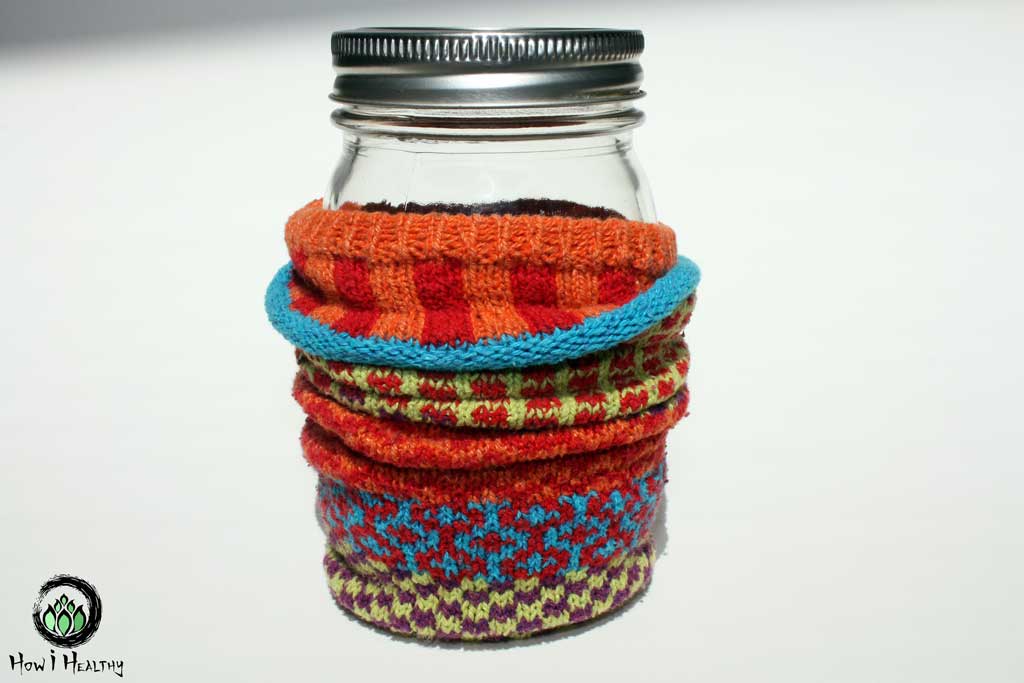
I already use USA made Mason jars as drinking glasses. But colored glass is more likely to be contaminated with lead. (28, 64)
So, the blue and green colored Mason jars I had for drinking were demoted to holding non-food items, like pens.
Mason jars are everywhere! Check out your local thrift shop before buying new ones.
Flatware: Liberty Tabletop®
USA made flatware is a novelty these days. But one company, Liberty Tabletop®, is still family-owned and operates in Sherrill, New York. (33)
Made with American stainless steel. Their 18-10 chromium/nickel ratios, instead 18-0 (common for imports), make the flatware more robust. (33)
The flatware is tested for lead and other metal contaminants, and they never use trichloroethylene (TCE) to wash their products. (33)
Works with One Tree Planted, a nonprofit focused on reforestation efforts around the world. (81)
French Press: Grosche®
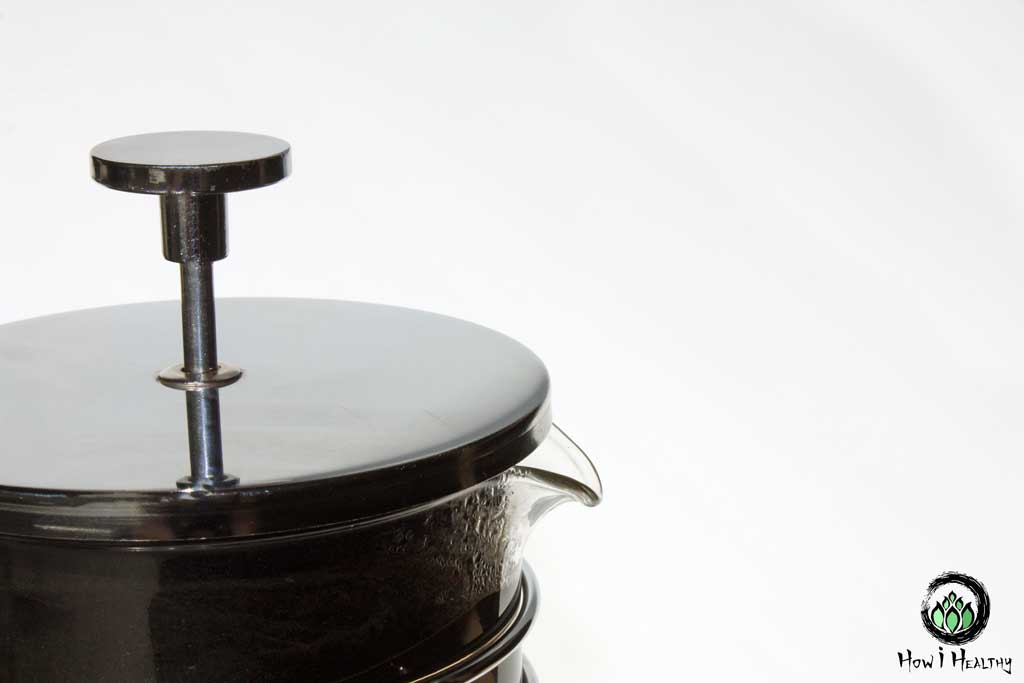
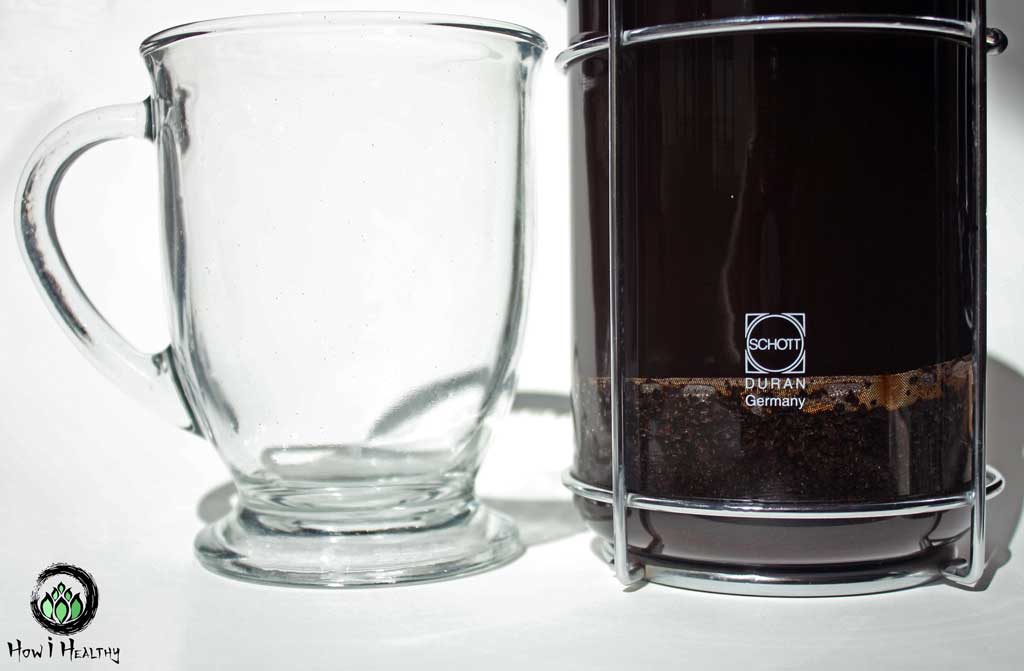
Grosche®, the Canadian-based French Press company is also a Certified B-Corp.
Their French presses & teapots are lead-free and made from German-made borosilicate glass.
With their “Every Cup Fills Another”, Grosche® provides clean drinking water to communities through The Safe Water Project. (83)
And Grosche® has a ‘take back’ program that will recycle and reuse end-of-life products. (84)
Makeup: Elate Cosmetics
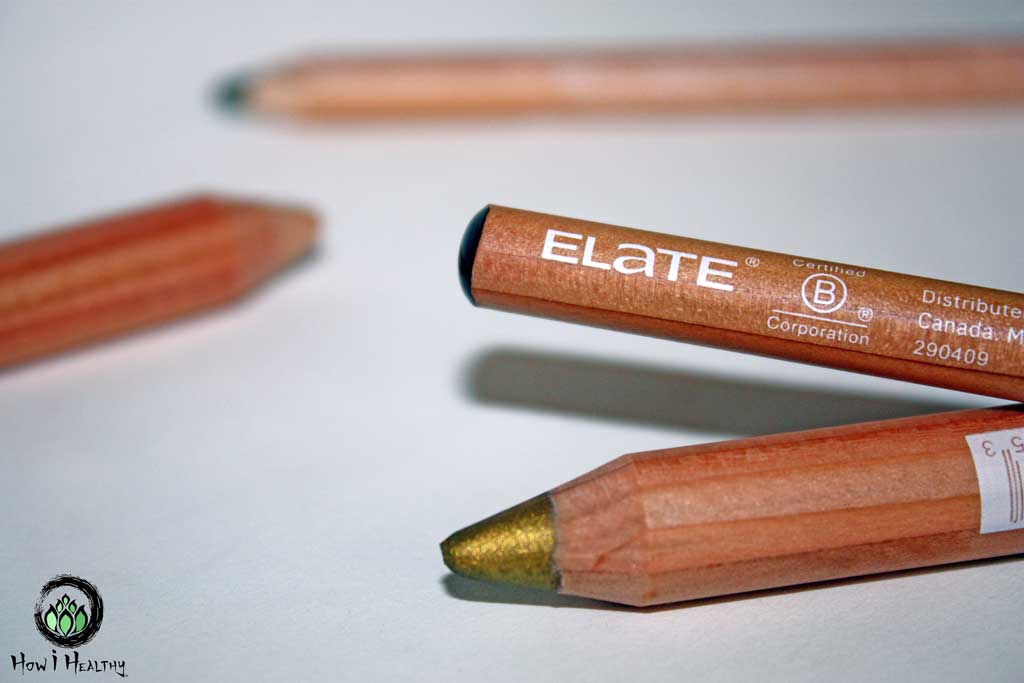
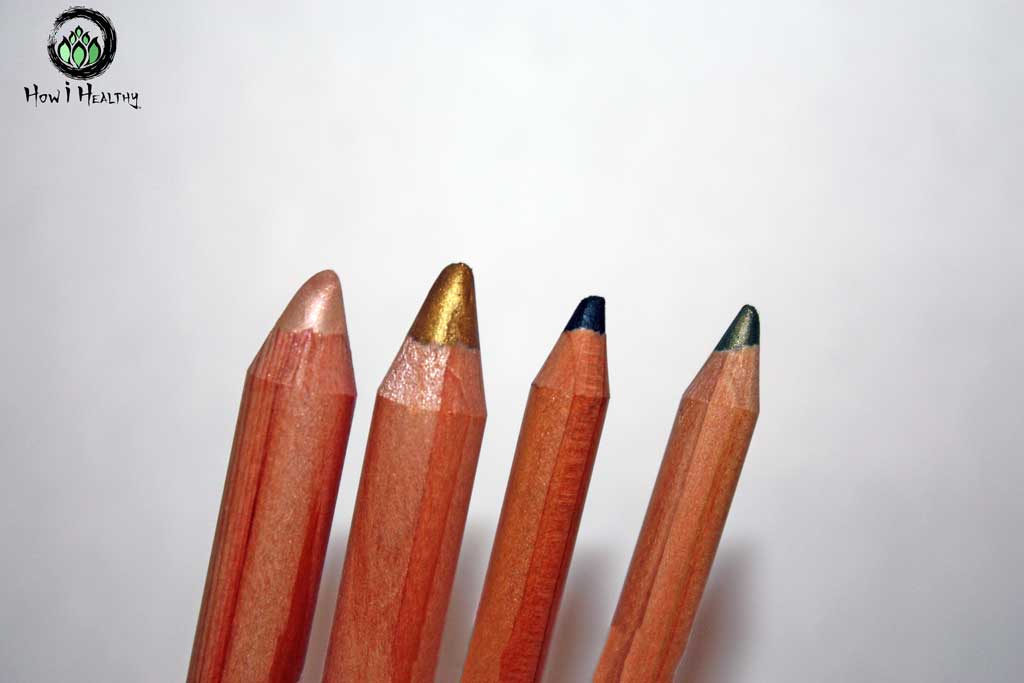
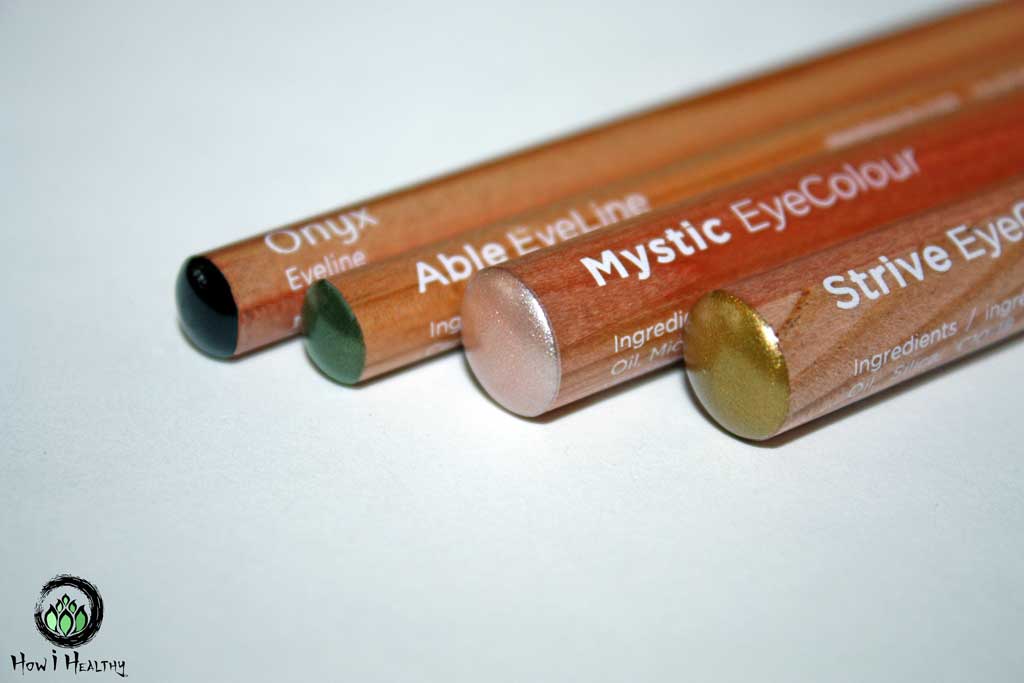
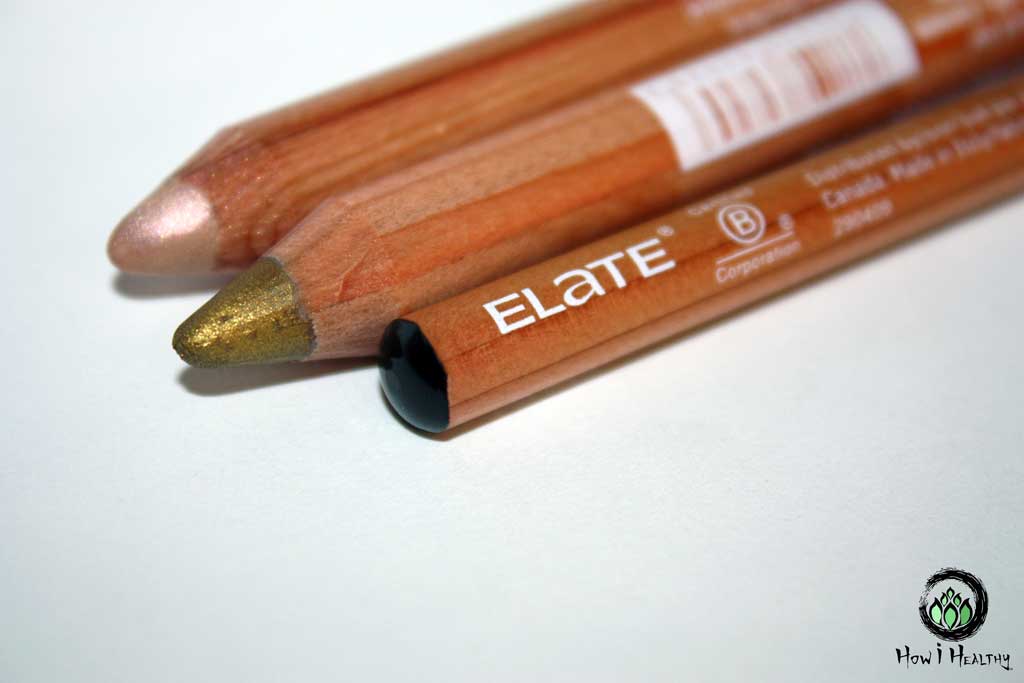
For ethical, sustainable, and lead-free makeup, look no further than Elate Cosmetics.
This Canadian-based Certified B-Corp makes cosmetics both Italian-made and Canadian-made. Their entire line follows strict EU standards and guidelines.
The product line offers refills, take-back recycling, compostable containers, and easily recycled materials like aluminum. 95% of Elate packaging is recyclable, reusable, or compostable. They are working on the last 5%.
They also market inclusively; using gender-inclusive language and model diversity.
Quality Sex Toys
Lead-free sex toys are hard to find.
And it would take much more than a single paragraph to explain why.
So, I made a few in-depth guides instead:
Salt: Jacobsen Salt Co.
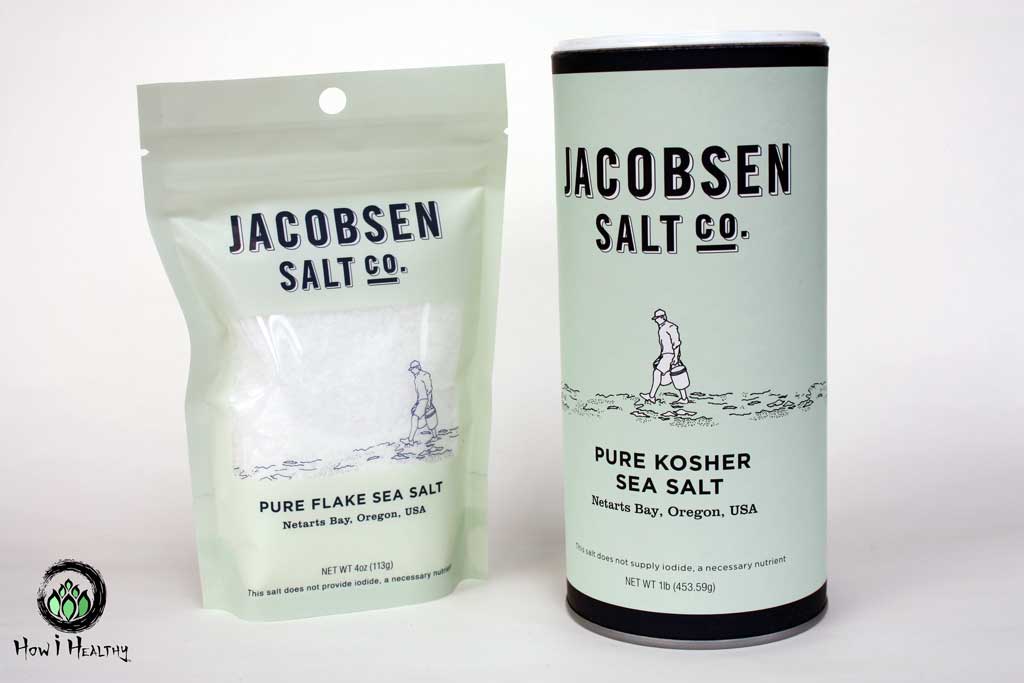
For third-party verified lead-free salt, look no further than Jacobsen Salt Co.
Not only is their salt lead-free, it’s also free of microplastics. And with the testing to back up the claim. (115, 116)
I bulk order the flaky salt and cook exclusively with it.
Water Filter: APEC®
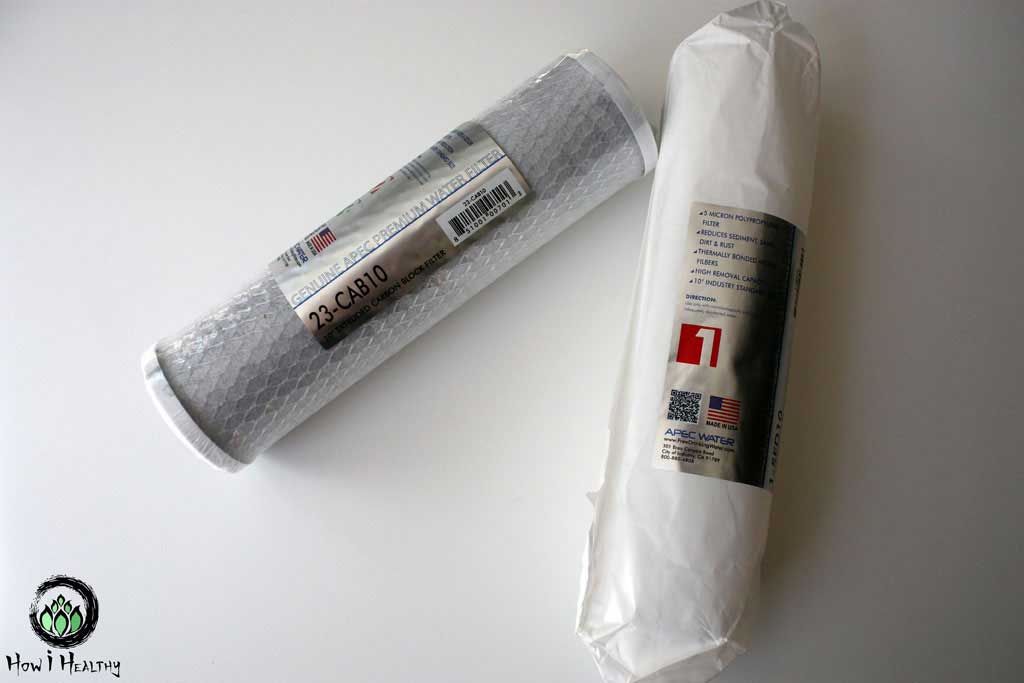
An APEC® water filter can reduce up to 99% of contaminants, including lead. (45)
APEC®’s filters are designed, engineered, and assembled in the USA. (45)
The filter and membranes are USA made too, one of the few filters out there that still are. (45)
There’s many price points and water filter systems. From under the sink to whole house.
APEC® also partners with local non-profits to provide water filtration systems to communities around the world.
How To Avoid Lead: Low Cost Ways
Going lead-free isn’t just buying lead-free stuff.
Here’s some low-cost / no-cost ideas:
Bathtub
You can test your bathtubs for lead.
Older tubs, especially enamel coated tubs, are more likely to be contaminated. We can’t all do a bathroom renovation, but opting for showers instead of baths might help. Using a Natural Rubber Shower Mat can also reduce contact.
And don’t ferment wine or food in your bathtub.
Food
We have to eat food. And almost all food has traces (some more than others) of lead. Thanks to our lead contaminated soil. (64)
Limiting consumption of root vegetables, sweet potatoes, carrots, oat products, and rice products, especially for young infants and children, might reduce lead exposure. (26)
Talk with your doctor or pediatrician when assessing dietary changes.
Hands
Ingestion is the main way that lead enters the body.
As unoriginal as it sounds:
Wash Your Hands.
Washing hands before meals, especially after being outside or after working with any leaded materials, might help prevent accidental ingestion. (15)
House
Lead comes into the home and quite literally, collects dust. Dust from workplaces and soil can contain lead. (15, 64)
Dusting, sweeping, and removing shoes before entering a home can keep contaminated dirt out of living spaces. (15)
Toys
Car keys are not a toy.
Car keys can contain up to 2.5% lead. Experts recommend not putting keys in the mouth or letting children handle them. (48)
The Takeaway Message

Lead exposure has an ancient history. And it’s still a problem.
Lead lurks in places like:
- Battery manufacturing and recycling
- Baby food, puff rice snacks, infant cereal & formula, fruit juice, teething biscuits
- Ceramic glazes, pottery, earthenware
- Children’s Toys (My Favorite Shop: EarthHero® has many lead-free and Non-Toxic Toys.)
- Counterfeit goods
- Drinking water
- Food grown in lead contaminated soil
- Glassware, drinking glasses, crystal glass
- Hair dye (in the form lead acetate)
- Household dust
- Inexpensive jewelry, children’s play jewelry, Mardi Gras beads
- Keys (These should not be given to children to play with or put in mouth)
- Lead paint
- Lead pipes and plumbing
- Leaded candle wicks
- Occupational exposure from X-ray film, mining, welding, soldering, key-making
- Sex toys
- Vinyl lunch boxes
(12,13, 15, 17, 18, 21, 22, 23, 24, 25, 26, 34, 35, 37, 64, 70)
Lead poisoning can cause developmental delays, learning disabilities, lower IQ, body pain, weakness, dementia, delirium, premature birth, and low birth weight. (12, 13, 15, 52, 53, 54)
I had elevated levels of lead in my body. I detoxed my home of lead by:
- Baking on USA-made cast iron from Lodge®.
- Burning USA made 100% beeswax cotton-wick Candles.
- Buying Lead-free Sex Toys from Ethical Sex Toy Shops.
- Cooking on SteelMade USA Flat Tops.
- Cooking with lead-free Jacobsen Salt.
- Keeping a clean home and dusting often.
- Learning how to spot Counterfeit goods.
- Opting for USA-made stainless steel flatware by Liberty Tabletop®.
- Switching to a lead-free glass French press.
- Taking shoes off before entering my house.
- Using these USA-made & lead-free Corelle® dishes.
- Filtering water with a USA-made APEC® Water Filter.
- Drinking from USA-made clear glass like Mason Jars and Anchor Hocking® Glass Mugs.
- Using Elate Cosmetics for ethical & sustainable makeup.
- Washing my hands before meals.
That’s How i Healthy!
-Artemis
- “Lead Poisoning: Common Symptoms & How You Get Lead Poisoning.” Edited by Carol DerSarkissian, WebMD Medical Reference, WebMD, 9 May 2019, webmd.com/children/what-is-lead-poisoning
- “Lead Poisoning: A Historical Perspective.” EPA, Environmental Protection Agency, 16 Sept. 2016, https://www.epa.gov/archive/epa/aboutepa/lead-poisoning-historical-perspective.html
- Riva, Michele Augusto, et al. “Lead Poisoning: Historical Aspects of a Paradigmatic ‘Occupational and Environmental Disease.’” Safety and Health at Work, Occupational Safety and Health Research Institute, Mar. 2012, ncbi.nlm.nih.gov/pmc/articles/PMC3430923/
- A;, Friedman T;Westreich M;Lurie DJ;Golik. “Rembrandt–Aging and Sickness: A Combined Look by Plastic Surgeons, an Art Researcher and an Internal Medicine Specialist.” The Israel Medical Association Journal : IMAJ, U.S. National Library of Medicine, 2007, https://pubmed.ncbi.nlm.nih.gov/17348473/
- The National Archives. “1833 Factory Act.” The National Archives, The National Archives, 23 May 2019, nationalarchives.gov.uk/education/resources/1833-factory-act/
- Redgrave, Jasper A; Redgrave, Alexander (1893). The factory & workshop acts, 1878 to 1891: with introduction, copious notes, and an elaborate index (5 ed.). London: Shaw. https://archive.org/details/b21731238/page/n6/mode/2up
- Hodge, Trevor, A. (October 1981). “Vitruvius, Lead Pipes and Lead Poisoning”. American Journal of Archaeology. Archaeological Institute of America. 85 (4): 486–491; https://www.jstor.org/stable/504874?origin=crossref&seq=1
- Harford, Tim. “Why Did We Use Leaded Petrol for so Long?” BBC News, BBC, 28 Aug. 2017, bbc.com/news/business-40593353
- “The House of the Butterflies: Lead Poisoning among Workers and Consumers.” Deceit and Denial: The Deadly Politics of Industrial Pollution, by GERALD MARKOWITZ and DAVID ROSNER, 1st ed., University of California Press, 2002, pp. 12–35. JSTOR, jstor.org/stable/10.1525/j.ctt1pp4s1.7
- Reyes, Jessica Wolpaw. “ENVIRONMENTAL POLICY AS SOCIAL POLICY? THE IMPACT OF CHILDHOOD LEAD EXPOSURE ON CRIME.” Working Paper 13097, NATIONAL BUREAU OF ECONOMIC RESEARCH, May 2007, nber.org/papers/w13097.pdf
- Feigenbaum, James J., and Christopher Muller. Lead Exposure and Violent Crime in the Early Twentieth Century. Harvard University, University of California at Berkeley, 22 Mar. 2016, Lead Exposure and Violent Crime in the Early Twentieth Century. https://www.sciencedirect.com/science/article/abs/pii/S0014498316300109
- “Lead Poisoning and Health.” World Health Organization, 2019, who.int/en/news-room/fact-sheets/detail/lead-poisoning-and-health
- Needleman, Herbert. “Lead Poisoning.” Annual Review of Medicine Vol. 55:209-222 (Volume Publication Date 18 February 2004), University of Pittsburgh School of Medicine, 2003, annualreviews.org/doi/10.1146/annurev.med.55.091902.103653#_i6
- Stretesky PB, Lynch MJ. The Relationship Between Lead Exposure and Homicide. Arch Pediatr Adolesc Med. 2001;155(5):579–582. doi:10.1001/archpedi.155.5.579. https://jamanetwork.com/journals/jamapediatrics/fullarticle/190628
- Wani, Ab Latif et al. “Lead toxicity: a review.” Interdisciplinary toxicology 8,2 (2015): 55-64. doi:10.1515/intox-2015-0009. https://pubmed.ncbi.nlm.nih.gov/27486361/
- Mai, F M M. “Beethoven’s terminal illness and death.” The journal of the Royal College of Physicians of Edinburgh 36,3 (2006): 258-63. https://www.researchgate.net/publication/6587565_Beethoven%27s_terminal_illness_and_death
- Njati, Shukuru Yusufu, and Mihayo Musabila Maguta. “Lead-based paints and children’s PVC toys are potential sources of domestic lead poisoning – A review.” Environmental pollution (Barking, Essex : 1987) 249 (2019): 1091-1105. doi:10.1016/j.envpol.2019.03.062. https://pubmed.ncbi.nlm.nih.gov/31146315/
- Shen, Zhengtao et al. “Lead-based paint in children’s toys sold on China’s major online shopping platforms.” Environmental pollution (Barking, Essex : 1987) 241 (2018): 311-318. doi:10.1016/j.envpol.2018.05.078. https://www.sciencedirect.com/science/article/abs/pii/S0269749118313988
- “Q & A About Lead in Tableware.” Q & A About Lead in Tableware, https://www.cdph.ca.gov/Programs/CCDPHP/DEODC/CLPPB/Pages/Q-A-Lead-in-Tableware.aspx#doineedtoworry
- Center for Food Safety and Applied Nutrition. “Questions and Answers on Lead-Glazed Traditional Pottery.” S. Food and Drug Administration, FDA, www.fda.gov/food/metals-and-your-food/questions-and-answers-lead-glazed-traditional-pottery#Q4
- Gardener, Hannah et al. “Lead and cadmium contamination in a large sample of United States infant formulas and baby foods.” The Science of the total environment 651,Pt 1 (2019): 822-827. doi:10.1016/j.scitotenv.2018.09.026. https://pubmed.ncbi.nlm.nih.gov/30253364/
- Eticha, Tadele et al. “Infant Exposure to Metals through Consumption of Formula Feeding in Mekelle, Ethiopia.” International journal of analytical chemistry 2018 2985698. 24 Apr. 2018, doi:10.1155/2018/2985698. https://pubmed.ncbi.nlm.nih.gov/29849640/
- Center for Food Safety and Applied Nutrition. “Lead Acetate in ‘Progressive’ Hair Dye Products.” S. Food and Drug Administration, FDA, 2018, www.fda.gov/cosmetics/cosmetic-products/lead-acetate-progressive-hair-dye-products
- Center for Food Safety and Applied Nutrition. “Lead in Cosmetics.” S. Food and Drug Administration, FDA, 2020, www.fda.gov/cosmetics/potential-contaminants-cosmetics/lead-cosmetics
- Wasson, Shirley J et al. “Lead in candle emissions.” The Science of the total environment 296,1-3 (2002): 159-74. doi:10.1016/s0048-9697(02)00072-4. https://www.sciencedirect.com/science/article/abs/pii/S0048969702000724
- Houlihan, Jane, and Charlotte Brody. “What’s in My Baby’s Food?” Healthy Babies Bright Futures, 2019, healthybabyfood.org/sites/healthybabyfoods.org/files/2019-10/BabyFoodReport_FULLREPORT_ENGLISH_R5b.pdf
- Mania, Monika et al. “Exposure assessment to lead, cadmium, zinc and copper released from ceramic and glass wares intended to come into contact with food.” Roczniki Panstwowego Zakladu Higieny 69,4 (2018): 405-411. doi:10.32394/rpzh.2018.0047. https://pubmed.ncbi.nlm.nih.gov/30525332/
- Turner, Andrew. “High Levels of Migratable Lead and Cadmium on Decorated Drinking Glassware.” Science of The Total Environment, Elsevier, 22 Oct. 2017, sciencedirect.com/science/article/pii/S0048969717328747?via%3Dihub
- Olszowski, Tomasz, and Andrzej Kłos. “The Impact of Candle Burning during All Saints’ Day Ceremonies on Ambient Alkyl-Substituted Benzene Concentrations.” Bulletin of Environmental Contamination and Toxicology, Springer US, Nov. 2013, ncbi.nlm.nih.gov/pmc/articles/PMC3824304/
- “Glossary of Volatile Organic Compounds .” Centers for Disease Control and Prevention, cdc.gov/nceh/clusters/fallon/glossary-voc.pdf
- “Soybean Candles for Healthy Life and Well Being.” South Carolina State University, 2010, https://portal.nifa.usda.gov/web/crisprojectpages/0206030-soybean-candles-for-healthy-life-and-well-being.html
- Wasson, Shirley J, et al. “Lead in Candle Emissions.” The Science of the Total Environment, U.S. National Library of Medicine, 16 Sept. 2002, ncbi.nlm.nih.gov/pubmed/12398334
- “Liberty Tabletop Is Concerned About Your Health & Safety.” Liberty Tabletop, libertytabletop.com/health-and-safety/
- “The Toxic Truth Behind Mardi Gras Beads.” com, Smithsonian Institution, 8 Mar. 2017, www.smithsonianmag.com/science-nature/toxic-truth-mardi-gras-beads-180962431/
- Lin, Cristiane Gurgel et al. “Pediatric lead exposure from imported Indian spices and cultural powders.” Pediatrics 125,4 (2010): e828-35. doi:10.1542/peds.2009-1396. https://publications.aap.org/pediatrics/article-abstract/125/4/e828/73173/Pediatric-Lead-Exposure-From-Imported-Indian?redirectedFrom=fulltext?autologincheck=redirected
- Redmon, David. Beads, Bodies, and Trash: Public Sex, Global Labor, and the Disposability of Mardi Gras. Routledge, 2015.
- Center for Food Safety and Applied Nutrition. “Kohl, Kajal, Al-Kahal, Surma, Tiro, Tozali, or Kwalli.” S. Food and Drug Administration, FDA, www.fda.gov/cosmetics/cosmetic-products/kohl-kajal-al-kahal-surma-tiro-tozali-or-kwalli-any-name-beware-lead-poisoning
- “Advancing Sustainable Materials Management:” Assessing Trends in Material Generation, Recycling, Composting, Combustion with Energy Recovery and Landfilling in the United States, 2018, epa.gov/sites/production/files/2018-07/documents/2015_smm_msw_factsheet_07242018_fnl_508_002.pdf
- Li, Malan et al. “Recycling and management of waste lead-acid batteries: A mini-review.” Waste management & research : the journal of the International Solid Wastes and Public Cleansing Association, ISWA 34,4 (2016): 298-306. doi:10.1177/0734242X16633773. https://pubmed.ncbi.nlm.nih.gov/26941209/
- Payne, Mark. “Lead in drinking water.” CMAJ : Canadian Medical Association journal = journal de l’Association medicale canadienne 179,3 (2008): 253-4. doi:10.1503/cmaj.071483. https://pubmed.ncbi.nlm.nih.gov/18663205/
- Masten, Susan J et al. “Flint Water Crisis: What Happened and Why?.” Journal – American Water Works Association 108,12 (2016): 22-34. doi:10.5942/jawwa.2016.108.0195. https://www.ncbi.nlm.nih.gov/pmc/articles/PMC5353852/
- Zahran, Sammy et al. “Four phases of the Flint Water Crisis: Evidence from blood lead levels in children.” Environmental research 157 (2017): 160-172. doi:10.1016/j.envres.2017.05.028. https://pubmed.ncbi.nlm.nih.gov/28570960/
- Scheuhammer, A M, and S L Norris. “The ecotoxicology of lead shot and lead fishing weights.” Ecotoxicology (London, England) 5,5 (1996): 279-95. doi:10.1007/BF00119051. https://pubmed.ncbi.nlm.nih.gov/24193869/
- Centers for Disease Control, Morbidity and Mortality Weekly Report (MMWR). “Infant lead poisoning associated with use of tiro, an eye cosmetic from Nigeria–Boston, Massachusetts, 2011.” August 3, 2012 https://www.cdc.gov/mmwr/preview/mmwrhtml/mm6130a3.htm
- “Manufacturer of APEC Ultimate & Essence Reverse Osmosis Water Filters Systems: ABOUT US.” APEC Water Systems, freedrinkingwater.com/about.htm/
- Handley, Margaret A et al. “Examining Lead Exposures in California through State-Issued Health Alerts for Food Contamination and an Exposure-Based Candy Testing Program.” Environmental health perspectives 125,10 104503. 26 Oct. 2017, doi:10.1289/EHP2582. https://pubmed.ncbi.nlm.nih.gov/29084633/
- Chambial, Shailja et al. “Vitamin C in disease prevention and cure: an overview.” Indian journal of clinical biochemistry : IJCB 28,4 (2013): 314-28. doi:10.1007/s12291-013-0375-3. https://pubmed.ncbi.nlm.nih.gov/24426232/
- Kondrashov, Vladislav et al. “Assessment of lead exposure risk in locksmiths.” International journal of environmental research and public health 2,1 (2005): 164-9. doi:10.3390/ijerph2005010164. https://pubmed.ncbi.nlm.nih.gov/16705814/
- State of California Department of Justice. News Release: Attorney General Lockyer sues key manufacturers over failure to warn consumers about exposure to lead from keys in violation of Proposition 65. https://oag.ca.gov/news/press-releases/attorney-general-lockyer-sues-key-manufacturers-over-failure-warn-consumers
- Mangas, S et al. “Lead poisoning from homemade wine: a case study.” Environmental health perspectives 109,4 (2001): 433-5. doi:10.1289/ehp.01109433. https://ehp.niehs.nih.gov/doi/10.1289/ehp.01109433
- Angelon-Gaetz, Kim A et al. “Lead in Spices, Herbal Remedies, and Ceremonial Powders Sampled from Home Investigations for Children with Elevated Blood Lead Levels – North Carolina, 2011-2018.” Morbidity and mortality weekly report vol. 67,46 1290-1294. 23 Nov. 2018, doi:10.15585/mmwr.mm6746a2. https://pubmed.ncbi.nlm.nih.gov/30462630/
- Bent, S., Göttsch, C., Braam, U. et al. The effects of heavy metal ions (Cd2+, Hg2+, Pb2+, Bi3+) on histamine release from human adenoidal and cutaneous mast cells. Agents and Actions 36, C321–C324 (1992). https://link.springer.com/article/10.1007/BF01997363. https://link.springer.com/article/10.1007/BF01997363
- Metryka, Emilia et al. “Lead (Pb) Exposure Enhances Expression of Factors Associated with Inflammation.” International journal of molecular sciences 19,6 1813. 20 Jun. 2018, doi:10.3390/ijms19061813. https://pubmed.ncbi.nlm.nih.gov/29925772/
- Doh HW, Stebbins CL, Choi HM, Park J, Nho H, Kim JK. Histamine H2 receptor blockade augments blood pressure responses to acute submaximal exercise in males. Appl Physiol Nutr Metab. 2016;41(6):605–610. doi:10.1139/apnm-2015-0450. https://pubmed.ncbi.nlm.nih.gov/27191340/
- Fragou, Domniki et al. “Epigenetic mechanisms in metal toxicity.” Toxicology mechanisms and methods 21,4 (2011): 343-52. doi:10.3109/15376516.2011.557878. https://pubmed.ncbi.nlm.nih.gov/21495872/
- Cheng, Tsu-Fan et al. “Epigenetic targets of some toxicologically relevant metals: a review of the literature.” Journal of applied toxicology : JAT 32,9 (2012): 643-53. doi:10.1002/jat.2717. https://analyticalsciencejournals.onlinelibrary.wiley.com/doi/10.1002/jat.2717
- Ryu, Hyun-Wook et al. “Influence of toxicologically relevant metals on human epigenetic regulation.” Toxicological research 31,1 (2015): 1-9. doi:10.5487/TR.2015.31.1.001. https://pubmed.ncbi.nlm.nih.gov/25874027/
- Webster, A.P., Plant, D., Ecker, S. et al. Increased DNA methylation variability in rheumatoid arthritis-discordant monozygotic twins. Genome Med 10, 64 (2018). https://genomemedicine.biomedcentral.com/articles/10.1186/s13073-018-0575-9. https://genomemedicine.biomedcentral.com/articles/10.1186/s13073-018-0575-9
- Jin, Zelin, and Yun Liu. “DNA methylation in human diseases.” Genes & diseases 5,1 1-8. 31 Jan. 2018, doi:10.1016/j.gendis.2018.01.002. https://pubmed.ncbi.nlm.nih.gov/30258928/
- Kandi, Venkataramana, and Sabitha Vadakedath. “Effect of DNA Methylation in Various Diseases and the Probable Protective Role of Nutrition: A Mini-Review.” Cureus 7,8 e309. 24 Aug. 2015, doi:10.7759/cureus.309. https://pubmed.ncbi.nlm.nih.gov/26430583/
- Heyn, Holger, and Manel Esteller. “DNA methylation profiling in the clinic: applications and challenges.” Nature reviews. Genetics 13,10 (2012): 679-92. doi:10.1038/nrg3270. https://pubmed.ncbi.nlm.nih.gov/22945394/
- Schmidt, Rebecca J et al. “Self-reported pregnancy exposures and placental DNA methylation in the MARBLES prospective autism sibling study.” Environmental epigenetics 2,4 (2016): dvw024. doi:10.1093/eep/dvw024. https://academic.oup.com/eep/article/2/4/dvw024/2664344?login=false
- Graziano, J H, and C Blum. “Lead exposure from lead crystal.” Lancet (London, England) 337,8734 (1991): 141-2. doi:10.1016/0140-6736(91)90803-w. https://pubmed.ncbi.nlm.nih.gov/1670790/
- Levin, Ronnie et al. “Lead exposures in U.S. Children, 2008: implications for prevention.” Environmental health perspectives 116,10 (2008): 1285-93. doi:10.1289/ehp.11241. https://ehp.niehs.nih.gov/doi/10.1289/ehp.11241
- Nilsson, Nils, et al. “Survey and Health Assesment of Chemicals Substances in Sex Toys .” Survey of Chemical Substances in Consumer Products, No. 77 , Danish Technological Institute, 2006, www2.mst.dk/udgiv/Publications/2006/87-7052-227-8/pdf/87-7052-228-6.pdf
- Buttar, H S. “Transvaginal Absorption and Disposition of Nonoxynol-9 in Gravid Rats.” Toxicology Letters, U.S. National Library of Medicine, Oct. 1982, https://pubmed.ncbi.nlm.nih.gov/6293122/
- Tourgeman, David E., et al. “Serum and Tissue Hormone Levels of Vaginally and Orally Administered Estradiol.” American Journal of Obstetrics and Gynecology, vol. 180, no. 6, 1999, pp. 1480–1483., doi:10.1016/s0002-9378(99)70042-6. https://pubmed.ncbi.nlm.nih.gov/10368494/
- Needham, Shawn, and Shane Needham. “Case Study: Absorption of Testosterone Cream via Scrotal Delivery.” International Journal of Pharmaceutical Compounding, U.S. National Library of Medicine, 2018, ncbi.nlm.nih.gov/pubmed/30384346
- Gupta, P.J. “Suppositories in Anal Disorders: a Review.” Https://Www.europeanreview.org/Wp/Wp-Content/Uploads/438.Pdf, 2007, europeanreview.org/wp/wp-content/uploads/438.pdf
- GAO, United States Government Accountability Office. “INTELLECTUAL PROPERTY.” Agencies Can Improve Efforts to Address Risks Posed by Changing Counterfeits Market, Report to the Chairman, Committee on Finance, U.S. Senate, Jan. 2018, gao.gov/assets/690/689713.pdf
- “Empowering Trust Brand Protection” GLOBAL SECURITY & BRAND PROTECTION 2019 YEAR IN REVIEW, UL Global Security & Brand Protection, 2019, https://www.ul.com/sites/g/files/qbfpbp251/files/2020-07/2019%20GSBP%20Annual%20Report_EN_web.pdf
- “Combating Trafficking in Counterfeit and Pirated Goods .” Office of Strategy, Policy & Plans, U.S. Department of Homeland Security, 24 Jan. 2020, dhs.gov/sites/default/files/publications/20_0124_plcy_counterfeit-pirated-goods-report_01.pdf
- OECD/EUIPO (2016), Trade in Counterfeit and Pirated Goods: Mapping the Economic Impact, Illicit Trade, OECD Publishing, Paris, https://www.oecd-ilibrary.org/governance/trade-in-counterfeit-and-pirated-goods_9789264252653-en. https://www.oecd-ilibrary.org/governance/trade-in-counterfeit-and-pirated-goods_9789264252653-en
- Suthivarakom, Granda. “I Bought These Things From Amazon Prime. Can You Tell Which Ones Are Real?” Wirecutter, The New York Times, 20 Feb. 2020, nytimes.com/wirecutter/blog/i-bought-these-things-from-amazon-prime-can-you-tell-which-ones-are-real/
- Stroppa, Andrea, et al. “Instagram and Counterfeiting in 2019: New Features, Old Problems .” Ghost Data, Rome, NY, 9 Apr. 2019, https://ghostdata.io/report/Instagram_Counterfeiting_GD.pdf
- Rubio, Julio et al. “Lepidium meyenii (Maca) reversed the lead acetate induced — damage on reproductive function in male rats.” Food and chemical toxicology : an international journal published for the British Industrial Biological Research Association 44,7 (2006): 1114-22. doi:10.1016/j.fct.2006.01.007. https://pubmed.ncbi.nlm.nih.gov/16510228/
- “Certifications.” Mountain Rose Herbs, 2020, mountainroseherbs.com/principles/certifications/.
- “Organics and Sustainability.”, Mountain Rose Herbs, 2020, info.mountainroseherbs.com/organics-sustainability.
- “Who We Support.” Mountain Rose Herbs, 2020, mountainroseherbs.com/principles/who-we-support.
- “Frequently Asked Questions FAQs.” Mountain Rose Herbs, 2020, mountainroseherbs.com/policies/faq/.
- “One Tree Planted – Earth Pattern Partnership.” Liberty Tabletop, www.libertytabletop.com/one-tree-planted-earth-pattern-partnership/.
- “More Sustainable, Every Day.” IKEA, www.ikea.com/us/en/this-is-ikea/sustainable-everyday/.
- “Safe Water Project By GROSCHE: Safe Water to Drink.” GROSCHE, grosche.ca/grosche-safe-water-project/.
- “FAQ” GROSCHE: https://grosche.ca/faq/
- “How the Flat Top Is Made.” Steelmade Cookware, steelmade.zendesk.com/hc/en-us/articles/360021070073-How-the-Flat-Top-is-made.
- Liévanos, Raoul S., et al. “An Intercategorical Ecology of Lead Exposure: Complex Environmental Health Vulnerabilities in the Flint Water Crisis.” International Journal of Environmental Research and Public Health, vol. 18, no. 5, 2021, p. 2217., https://www.mdpi.com/1660-4601/18/5/2217. https://www.mdpi.com/1660-4601/18/5/2217
- Whitehead, LaToria S. PhD, MPH; Buchanan, Sharunda D. PhD, MS Childhood Lead Poisoning: A Perpetual Environmental Justice Issue?, Journal of Public Health Management and Practice: January/February 2019 – Volume 25 – Issue – p S115-S120 doi: 10.1097/PHH.0000000000000891. https://pubmed.ncbi.nlm.nih.gov/30507780/
- Kaufman, Joel D., and Anjum Hajat. “Confronting Environmental Racism.” Environmental Health Perspectives, vol. 129, no. 5, 2021, p. 051001., https://ehp.niehs.nih.gov/doi/10.1289/EHP9511. https://ehp.niehs.nih.gov/doi/10.1289/EHP9511
- Washington, Harriet A. A Terrible Thing to Waste: Environmental Racism and Its Assault on the American Mind. Little, Brown Spark, 2020.
- Doyle, John T et al. “Challenges and Opportunities for Tribal Waters: Addressing Disparities in Safe Public Drinking Water on the Crow Reservation in Montana, USA.” International journal of environmental research and public health 15,4 567. 21 Mar. 2018, doi:10.3390/ijerph15040567. https://pubmed.ncbi.nlm.nih.gov/29561815/
- Kegler, Michelle C et al. “Primary prevention of lead poisoning in rural Native American children: behavioral outcomes from a community-based intervention in a former mining region.” Family & community health 33,1 (2010): 32-43. doi:10.1097/FCH.0b013e3181c4e252. https://pubmed.ncbi.nlm.nih.gov/20010003/
- “Eco-Responsibility.” Lodge Cast Iron, https://www.lodgecastiron.com/about-lodge/eco-responsibility.
- https://hbbf.org/sites/default/files/2022-12/StoreVsHomemade_2022_0.pdf, Jane, and Charlotte Brody. Executive Summary: Is Homemade Baby Food Better? – Hbbf.org. Health Babies Brighter Futures, Aug. 2022, http://www.hbbf.org/sites/default/files/2022-12/BabyFoodReport2022_R7b_ExecSumm-ENGLISH.pdf
- Yeter D, Banks EC, Aschner M. Disparity in Risk Factor Severity for Early Childhood Blood Lead among Predominantly African-American Black Children: The 1999 to 2010 US NHANES. International Journal of Environmental Research and Public Health. 2020; 17(5):1552. https://www.mdpi.com/1660-4601/17/5/1552. https://www.mdpi.com/1660-4601/17/5/1552
- Trejo, Sam, et al. “The Psychosocial Effects of the Flint Water Crisis on School-Age Children.” https://www.nber.org/papers/w29341 , 2021, https://www.nber.org/system/files/working_papers/w29341/w29341.pdf
- “Long Lines for Water and New Evidence of Long-Term Health Impact on the Children of Flint.” CBS News, 12 Mar. 2020, https://www.cbsnews.com/news/flint-water-crisis-long-term-health-impact-on-children-60-minutes-2020-03-12/
- “Exhibiting a View of the Improvements and Discoveries in the Various Branches of Medical Science.” The London Medical and Surgical Journal: vol. 4, 1834, pp. 231–232.
- Montes-Santiago, Julio. “The lead-poisoned genius: saturnism in famous artists across five centuries.” Progress in brain research 203 (2013): 223-40. doi:10.1016/B978-0-444-62730-8.00009-8. https://pubmed.ncbi.nlm.nih.gov/24041283/
- Rasmussen, Kaare Lund, et al. “Comparison of Mercury and Lead Levels in the Bones of Rural and Urban Populations in Southern Denmark and Northern Germany during the Middle Ages.” Journal of Archaeological Science: Reports, vol. 3, 2015, pp. 358–370., https://doi.org/10.1016/j.jasrep.2015.06.021. https://doi.org/10.1016/j.jasrep.2015.06.021
- Warren, Christian. Brush with Death: A Social History of Lead Poisoning. Johns Hopkins University Press, 2001.
- Monnot, Andrew D et al. “An exposure and health risk assessment of lead (Pb) in lipstick.” Food and chemical toxicology : an international journal published for the British Industrial Biological Research Association 80 (2015): 253-260. doi:10.1016/j.fct.2015.03.022. https://pubmed.ncbi.nlm.nih.gov/25839902/
- Al-Saleh, Iman et al. “Assessment of lead in cosmetic products.” Regulatory toxicology and pharmacology : RTP 54,2 (2009): 105-13. doi:10.1016/j.yrtph.2009.02.005. https://pubmed.ncbi.nlm.nih.gov/19250956/
- Nourmoradi, H et al. “Assessment of lead and cadmium levels in frequently used cosmetic products in Iran.” Journal of environmental and public health 2013 (2013): 962727. doi:10.1155/2013/962727. https://pubmed.ncbi.nlm.nih.gov/24174937/
- Kaličanin, Biljana, and Dragan Velimirović. “A Study of the Possible Harmful Effects of Cosmetic Beauty Products on Human Health.” Biological trace element research 170,2 (2016): 476-84. doi:10.1007/s12011-015-0477-2. https://pubmed.ncbi.nlm.nih.gov/26296330/
- Saitta, Peter et al. “Is there a true concern regarding the use of hair dye and malignancy development?: a review of the epidemiological evidence relating personal hair dye use to the risk of malignancy.” The Journal of clinical and aesthetic dermatology 6,1 (2013): 39-46. https://www.ncbi.nlm.nih.gov/pmc/articles/PMC3543291/
- “Hair Dyes.” American Cancer Society, cancer.org/cancer/cancer-causes/hair-dyes.html
- McCall, Erin E et al. “Maternal hair dye use and risk of neuroblastoma in offspring.” Cancer causes & control : CCC 16,6 (2005): 743-8. doi:10.1007/s10552-005-1229-y. https://pubmed.ncbi.nlm.nih.gov/16049813/
- Bunin, G R et al. “Risk factors for astrocytic glioma and primitive neuroectodermal tumor of the brain in young children: a report from the Children’s Cancer Group.” Cancer epidemiology, biomarkers & prevention : a publication of the American Association for Cancer Research, cosponsored by the American Society of Preventive Oncology 3,3 (1994): 197-204.
- Efird, J T et al. “Beauty product-related exposures and childhood brain tumors in seven countries: results from the SEARCH International Brain Tumor Study.” Journal of neuro-oncology 72,2 (2005): 133-47. doi:10.1007/s11060-004-3121-0
- Khalili, Fariba et al. “Health Risk Assessment of Dermal Exposure to Heavy Metals Content of Chemical Hair Dyes.” Iranian journal of public health 48,5 (2019): 902-911. https://www.ncbi.nlm.nih.gov/pmc/articles/PMC6717416/
- Center for Food Safety and Applied Nutrition. “Lead Acetate in ‘Progressive’ Hair Dye Products.” S. Food and Drug Administration, FDA, 2018, https://www.fda.gov/cosmetics/cosmetic-products/lead-acetate-progressive-hair-dye-products
- Fayet-Moore, Flavia et al. “An Analysis of the Mineral Composition of Pink Salt Available in Australia.” Foods (Basel, Switzerland) vol. 9,10 1490. 19 Oct. 2020, doi:10.3390/foods9101490. https://pubmed.ncbi.nlm.nih.gov/33086585/
- Dim, L A et al. “Lead and other metals distribution in local cooking salt from the Fofi salt- spring in Akwana, Middle Benue Trough, Nigeria.” Journal of environmental science and health. Part. B, Pesticides, food contaminants, and agricultural wastes vol. 26,3 (1991): 357-65. doi:10.1080/03601239109372742. https://pubmed.ncbi.nlm.nih.gov/1894921/
- https://www.ncbi.nlm.nih.gov/pmc/articles/PMC3895781/. https://www.ncbi.nlm.nih.gov/pmc/articles/PMC3895781/
- Jacobsen Salt Co. “FAQs” https://jacobsensalt.com/pages/faq
“How Jacobsen Salt Co.’s Salt Microplastics.” Jacobsen Salt Co., Jacobsen Salt Co., 4 Feb. 2019, jacobsensalt.com/blogs/news/how-jacobsen-salt-co-water-filtration-prevents-microplastics.
Want More?
Want more about lead toxicity? Like supporting local bookstores, libraries, or the Earth? Check out:
A Terrible Thing to Waste: Environmental Racism and Its Assault on the American Mind
By Harriet A Washington
Washington, with a multidimensional approach, exposes the link between structural racism, environmental policy, health, and child development in America and beyond. Why are Black communities disproportionally exposed to environmental hazards? What are the impacts of that exposure?
From spatial injustices like segregation, racist city planning, and land & water contamination, to procedural injustices, this data-packed book delivers example after example of how policy failed, and continues to fail, Black communities.
Buy at: Bookshop® or Better World Books®
Beads, Bodies, and Trash: Public Sex, Global Labor, and the Disposability of Mardi Gras
By David Redmon
For a textbook-quality case study of harmful consumerism, check this book out. It combines cultural sociology and the product life cycle of Mardi Gras beads. From unethical working conditions in China, to the environmental impact of lead-contaminated plastics, Redmon shows how this innocent product isn’t innocent at all.
It’s not all doom and gloom though. Verdigras, a New Orleans grassroots organization dedicated to preserving Mardi Gras while preserving the Earth, shares ideas on how to help.
Buy at: Bookshop® or Better World Books®
There’s Something in the Water: Environmental Racism in Indigenous & Black Communities
By Dr. Ingrid R.G. Waldron
This is a case study packed with empirical evidence. Dr. Waldron exposes structural racism and its impact on environmental policy and how this environmental racism disproportionately affects Black communities and Mi’kmaq First Nations in Nova Scotia.
These communities are disproportionately located near pollution sources, toxic waste sites, landfills, and chemical plants. This spatial injustice creates hazardous housing situations while procedural injustice perpetuates insufficient environmental policy.
Dr. Waldron goes one-step further. Through community-based participatory research (CBPR) she investigates the mental health impacts of land dispossession, forced migration, settler-colonialism, and intergenerational trauma too. And it’s only the start of Dr. Waldron’s work.
For more information about Dr. Waldron’s ongoing activism, check out the ENRICH Project.
Buy at: Bookshop® or Better World Books®
